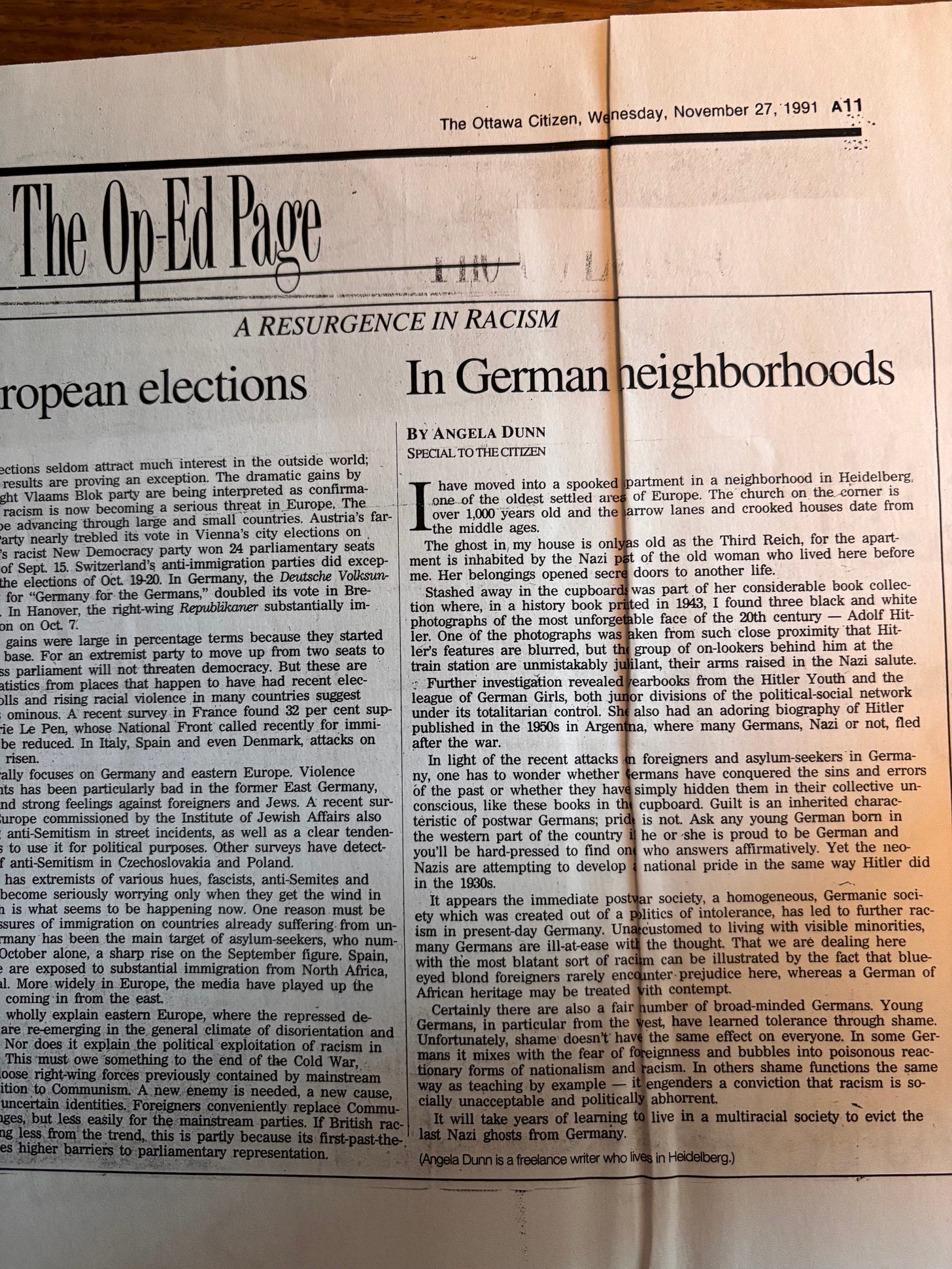The ghost of Germany's past haunts my first vote as a citizen
Three decades ago, I found Nazi memorabilia in my Heidelberg apartment. Today, as far-right extremism surges, those shadows loom larger
Two weeks ago I got German citizenship and today voted in the federal election.
Migration is a big topic.
The failing economy is another.
Digitalisation is woefully behind.
The disappearing environmental agenda.
The wars in Ukraine and Gaza.
Lack of leadership.
The biggest issue of all in my opinion is the frightening and dramatic rise of the far right in a nation where a “culture of remembrance” and a consciousness of the atrocities of the past (see hashtag “never again”) is enshrined in the national psyche and a central part of the history curriculum.
Former Chancellor Angela Merkel is blamed for triggering right-wing extremism by opening the borders to migrants in 2015, an act for which she was celebrated at the time. That year, 2 1/2 million migrants came to Germany. One lightning bolt election issue is the government support many migrants receive from taxpayer euros. According to Statistica, 2.2 M migrants came in 2022 and another 1.9 M in 2023.
In 1991, I published an op-ed in the Ottawa Citizen that reminded me of the current political landscape. At the time, riots had broken out in Hoyerswerda, only a year after reunification. Molotov cocktails were thrown into housing where contract workers from Africa were living. Vietnamese street vendors were threatened. The attacks reflected a hostility towards non-Germans and a belief that foreigners were taking jobs, government subsidies and housing from locals, although the number of asylum seekers annually to Germany at that time was in the low six figures.
Reading my op-ed today, you’d think nothing has changed. Here’s an excerpt from it:
“I have moved into a spooked apartment in a neighbourhood in Heidelberg. The church on the corner is over 1,000 years old and the narrow lanes and crooked houses date from the Middle Ages.
The ghost in my house is only as old as the Third Reich, for the apartment is inhabited by the Nazi past of the old woman who lived here before me. Her belongings opened secret doors to another life.
Stashed away in the cupboard was part of her considerable book collection where, in a history book printed in 1943, I found three black-and-white photographs of the most memorable face of the 20th century - Adolf Hitler. One of the photographs was taken from such close proximity that Hitler’s features are blurred, but the group of on-lookers behind him at the train station are unmistakably jubilant, their arms raised in the Nazi salute.
Further investigation revealed yearbooks from the Hitler Youth and the League of German Girls…She also had an adoring biography of Hitler published in the 1960s in Argentina, where many Germans, Nazi or not, fled after the war.
In light of recent attacks on foreigners and asylum-seekers in Germany, one has to wonder whether Germans have conquered the sins and error of the past or whether they have simply hidden them in their collective unconscious, like these books in the cupboard….
It will take years of learning to live in a multiracial society to evict the last Nazi ghosts from Germany.”
When I wrote this I found the ending a little twee. Now it rings true more than ever.




